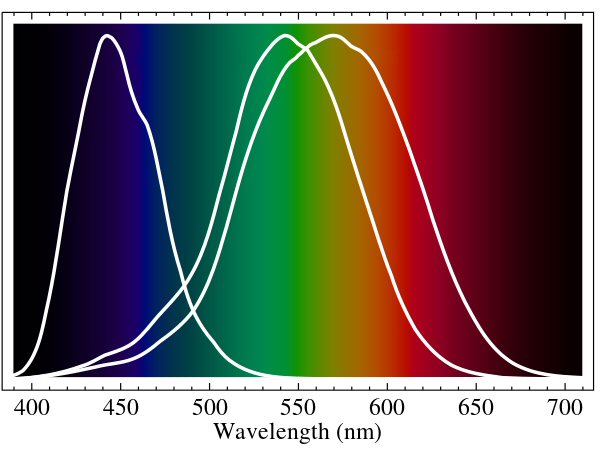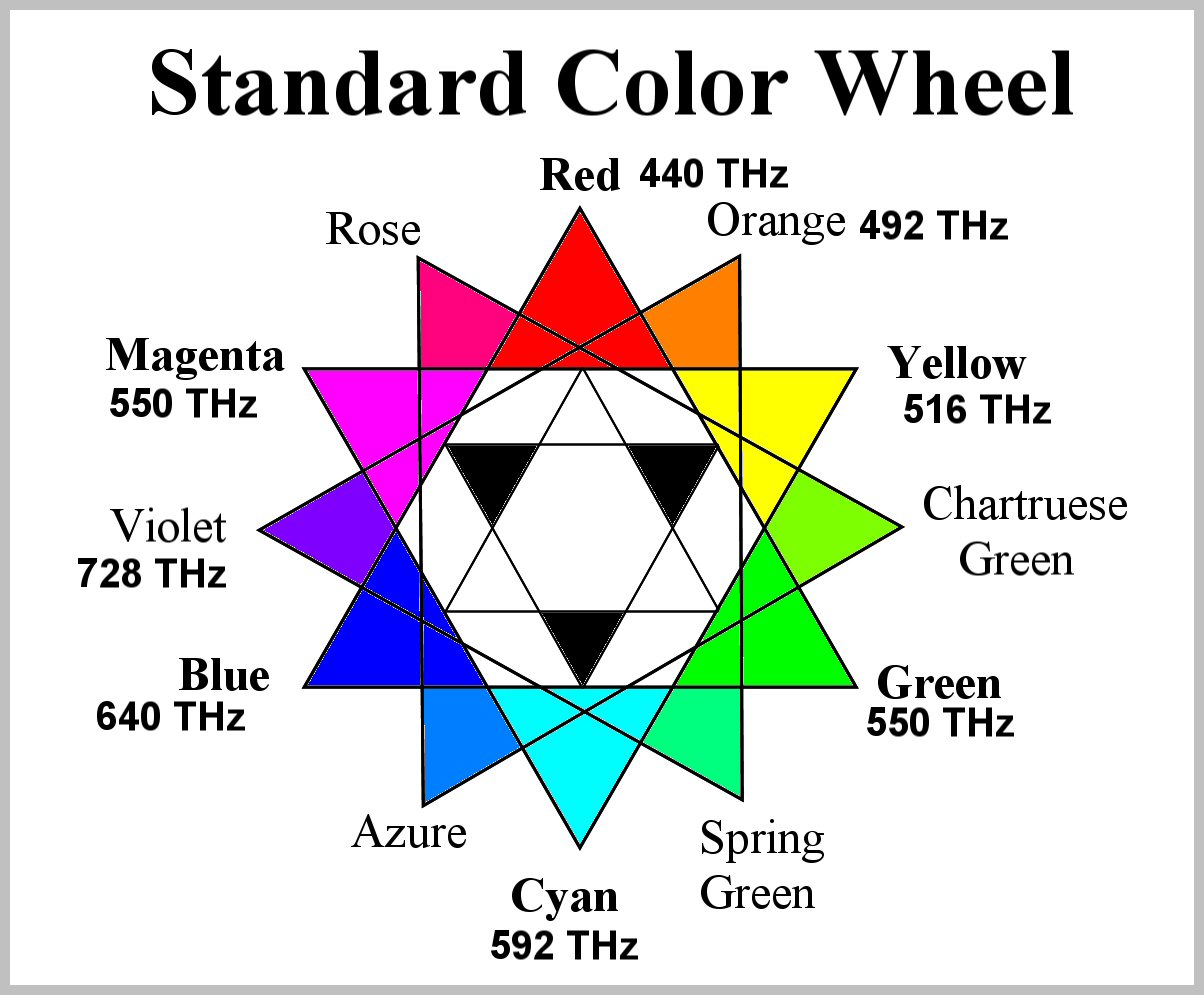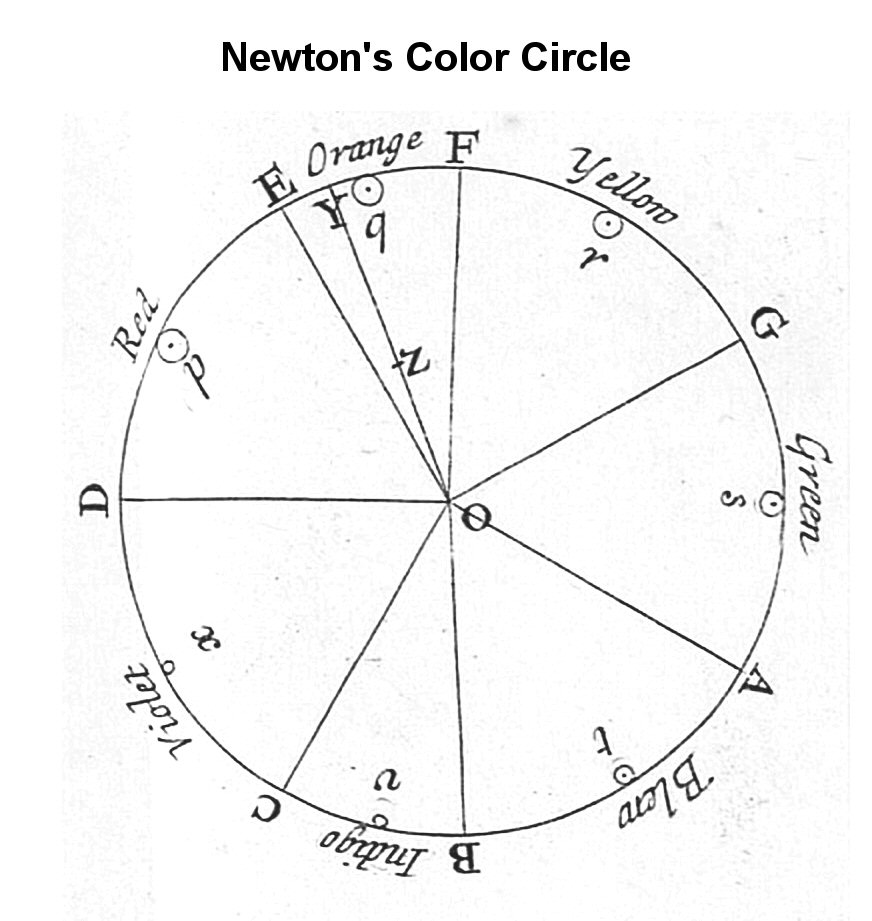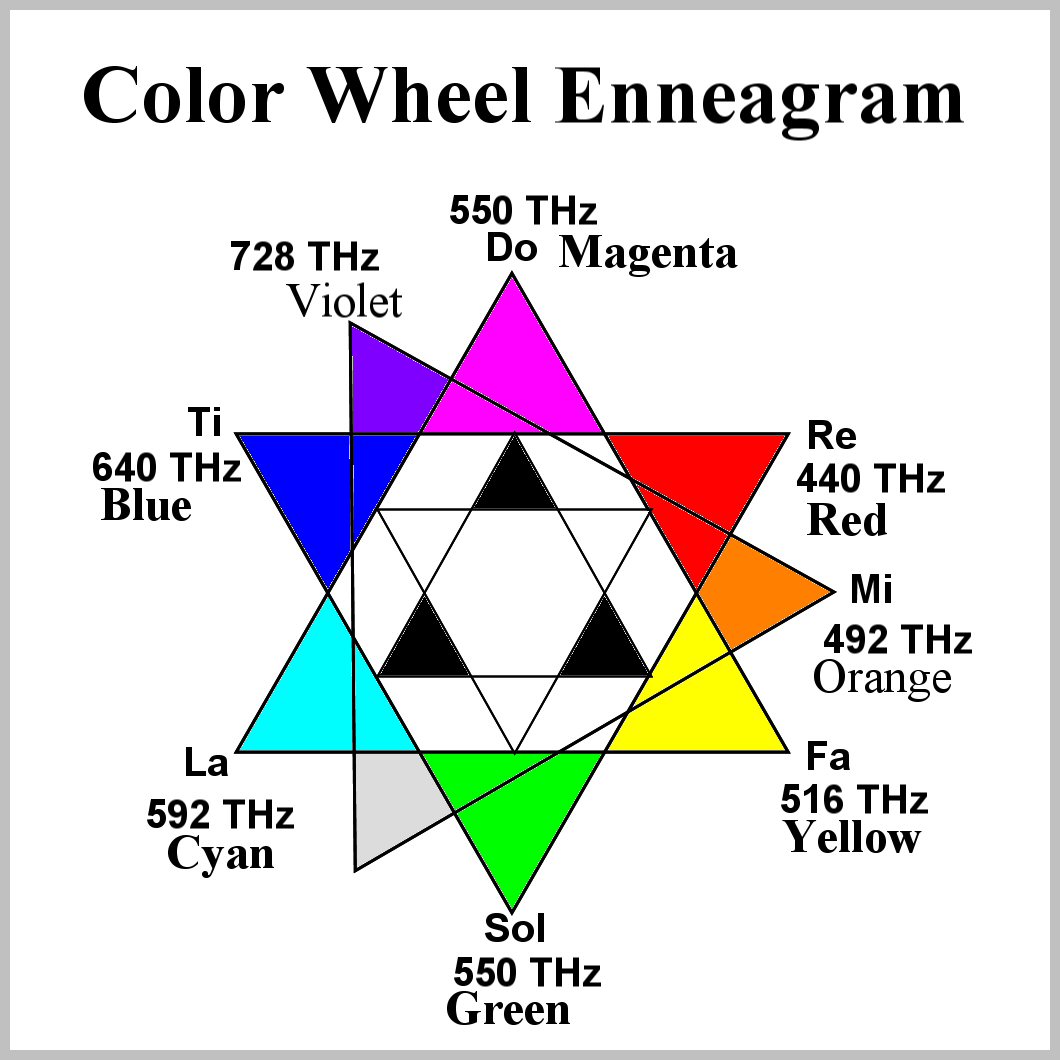The concept of the octaves in the Enneagram relates to audible sound and everyone knows that the notes on the piano do not sound in a vacuum. This is because sound requires the displacement of air into waves of certain frequencies that carry the sound out from the source. I wondered, therefore, whether the sound octaves would exist in places outside of the earth's atmosphere?"
Although we can ascribe sound to all sorts of mediums in the cosmos, these sounds can only exist up to the edge of the medium. I remember asking myself this question and it starting me thinking about color because it is based photons of light from distant stars that can travel through the empty vacuum of space. Their color is dependent on their spin that produces a measurable vibration.
"Given that there are seven colors in the solar spectrum, it makes sense to try to place them into the Enneagram as we do for Musical Octave, but it is not entirely obvious how to map them into a circle as the solar spectrum is a straight line.
"In 1671 Isaac Newton described the colors using a prism as the famous Roy G. Biv mnemonic for red, orange, yellow, blue, indigo, violet. He pushed the indigo because he was anxious to use the magic seven number, but it has now fallen into disuse as no one has been able to see it as distinct. It is also not clear what he meant by the colors blue, indigo, and violet.
"In 1810 Johann Wolfgang von Goethe published the 'Theory of Colors' which explored the idea that colors were related to perception and that darkness is not merely the absence of light, but is its polar opposite, capable of interacting with light. He also showed how different colors were visible based on the position of the prism and the size of the slits, thus showing that Newton's experiment was just a special case. He recognized only six primary colors in his color wheel. but it does appear that he recognized 'magenta' which he called purple. (This is one of the three primary pigments used in printers which was officially patented as a color in 1859 and renamed after the Italian town where a battle was won by Napoleon III in that year.)
"In this concept of perception, Goethe foreshadowed the scientific experiments which showed that the retinas of the human eye have three color receptors:

"Despite these receptors not being equally spread over the spectrum, the brain is capable of seeing all the colors, including 'magenta', which is not in the solar spectrum. (Interestingly, when staring at green and turning off the lights, magenta appears, because its vibration is halfway between violet and red of the spectrum with the same vibration as green, thus it is the polar opposite of green, like an anti-photon.)
"After placing the colors in the first obvious correspondence to 'do'-'ti' with their average vibration within their ranges, their vibration ratios were compared to see if it was similar to the notes with their vibration retardation at 'mi'-'fa' and 'ti'-'do', but they were all uniform with the only large changes at each end of the spectrum, which are attributable to the large ranges of red and violet. It is possible that the short range of yellow might be a clue to its position near 'mi'-'fa' and the interesting observation that yellow and cyan look like bookends to green,

but other than that there appears to be no correspondence to the enneagram positioning of notes:
| Possible Note Color | do (red) | re (orange) | mi (yellow) | fa (green) | sol (cyan) | la (blue) | ti (violet) | (magenta) |
| Avg Frequency (THz) | 440 | 492 | 516 | 550 | 592 | 640 | 728 | 550 |
| Vibration Change | 1 | 1.1181 | 1.0488 | 1.0659. | 1.0763 | 1.081 | 1.1375 | .75549 |
| Vibration Range (THz) | 80 | 25 | 9 | 50 | 35 | 60 | 124 | 50 |
"Looking at the color wheel below, I was amazed by its symmetry as it shows the primary (additive) colors of light: red, green, and blue used in TV screens as a triangle and the secondary (subtractive) pigment colors of cyan, magenta, and yellow used for printing as an upside down triangle. The tertiary colors are between them on two other triangles turned 30 & 60 degrees. There are six colors which come from the primary triangle and the inverted secondary triangle and, when added to the important tertiary colors of orange and violet, they add up to eight colors. (Note that the hexagram in the center with its sides black and white to indicate that 'rgb' together make white and 'cmy' make black.):

"At first, it appeared to me that is was impossible to relate this to the Enneagram, until I looked at Newton's color circle:

"Here Newton placed violet at 'C' ('do'), which is strange, but this was a perfect clue to rotating the Color Wheel above so that Magenta is at the top. Then removing the tertiary colors with the exception of orange and violet, with orange needed to make 'mi' and violet being a perfect candidate for the 'higher do'; the result is below:

"How beautifully this compares with the standard Gurdjieff Enneagram of Sound!
| do | C | magenta | Photonic Space |
| re | D | red | Organic Life |
| mi | E | orange | Humans |
| fa | F | yellow | Earth |
| sol | G | green | All Planets |
| la | A | cyan | Sun |
| ti | B | blue | Milky Way |
| higher do | higher C | violet | Megalocosmos |